National Parks & Wildlife sanctuary in India
The national parks in India come under the IUCN category of protected area. Hailey National park is the first national parks of India established in 1936. The list of national parks in India is endless as there are many national parks in all the states. Initially India only had 5 national parks in 1970. Later on in 1972, India signed the wildlife protection act to protect and safeguard the tigers and other endangered species. In 1980, the federal legislation to strengthen the protection of animals and wildlife species was introduced. According the data taken till April 2007 there are 96 national parks with the total land area of38, 029.18 km2 that is (14,683.15 sq mi) km² and this comprises 1.16% land surface of India.
In India, 166 national parks have been authorized and remaining scheduled parks are in the process to be established. The national parks in India offer several sigh seeing destination to the wildlife lovers as India has diversity in the geography and topographical areas making it the natural habitat for many species. The national parks in India are filled of variations in animals, birds and other species depending on the nature. The variations in the national park ranges from fauna, flora, aqua fauna, and many more that can be seen in Indian National parks. Tourists and wildlife lovers can experience the beauty of national parks by jeep safari or elephant safari.
The national parks that can be named in India are Dachigam national park situated in Himalayas and near to Srinagar, Great Himalayan national park, Corbett also known as Corbett tiger reserve located in Uttarakhand, Sunderband national Park located in west Bengal, and Ranthambore national park of Rajasthan and these national parks are gems of all the parks in India. The Kaziranga national park located in north east region of Assam is famous for the one horned Rhinos, as you can find this specie only in this national park in India.
Here is list of some popular National Parks & Wildlife sanctuary in India.
Corbett National Park, Uttarakhand
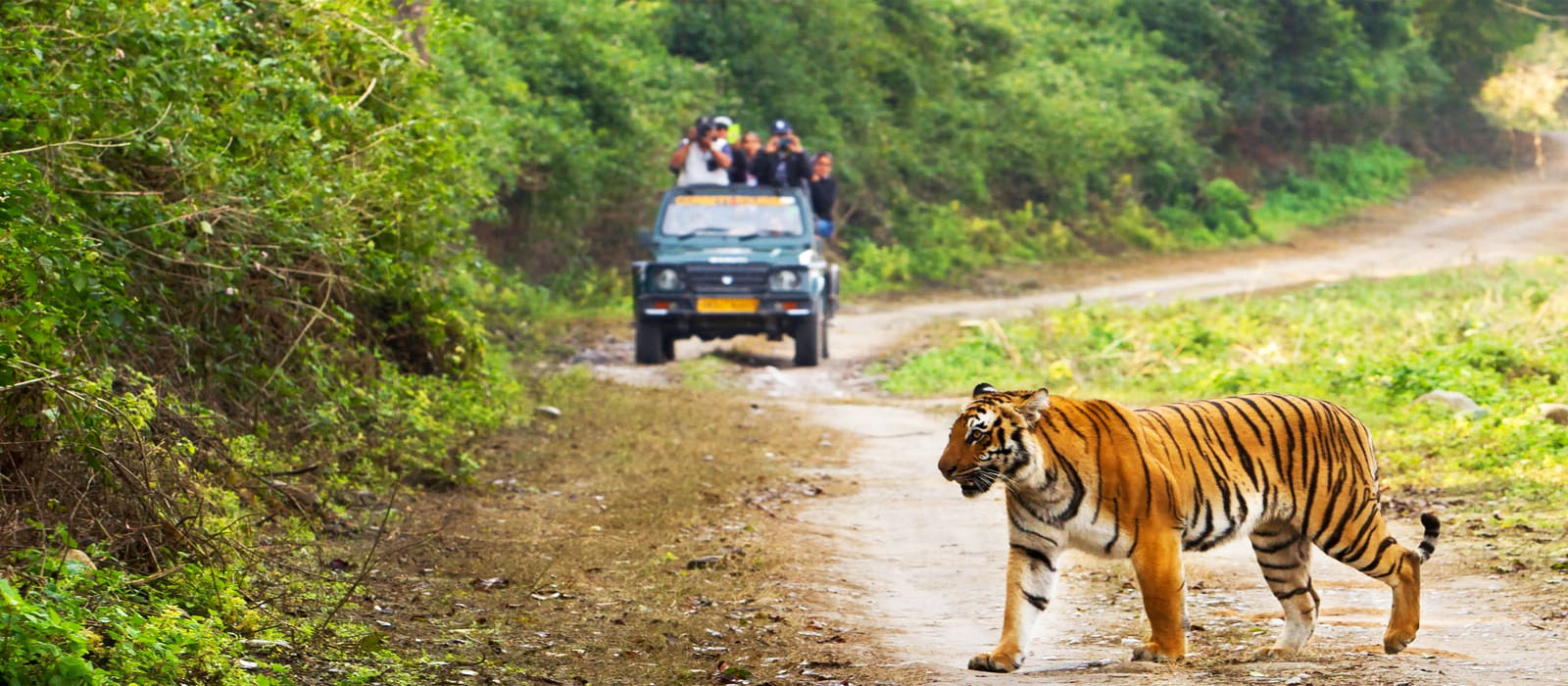
Corbett has aptly been called the property of Roar, Trumpet and Song. It represents a spectacle of outstanding beauty. Corbett National Park is located in 2 districts- Nainital and also Pauri- at the mountain country of Uttarakhand in Northern India. Because of the positioning of this book from the foothills of the Central Himalayas, both Himalayan and peninsular Flora and fauna can be found within this place. Corbett is the place for three nationwide conservation projects targeted at rescuing notable endangered species from extinction and offering a secure Habitat for them. These projects are- Project Tiger, Crocodile Conservation Project and Project Elephant.
There is a great diversity in the flora and fauna of the Corbett National Park. One can find over 575 species of birds, 25 species of reptiles, 50 species of mammals and 7 species of amphibians. Some of the major mammals that can be found in this park are Deer, Elephant, Barking Deer, Tiger, and Leopard Panther etc.
- Suggested Tour: Corbett National Park Tour Packages
Ranthambore National Park, Rajasthan
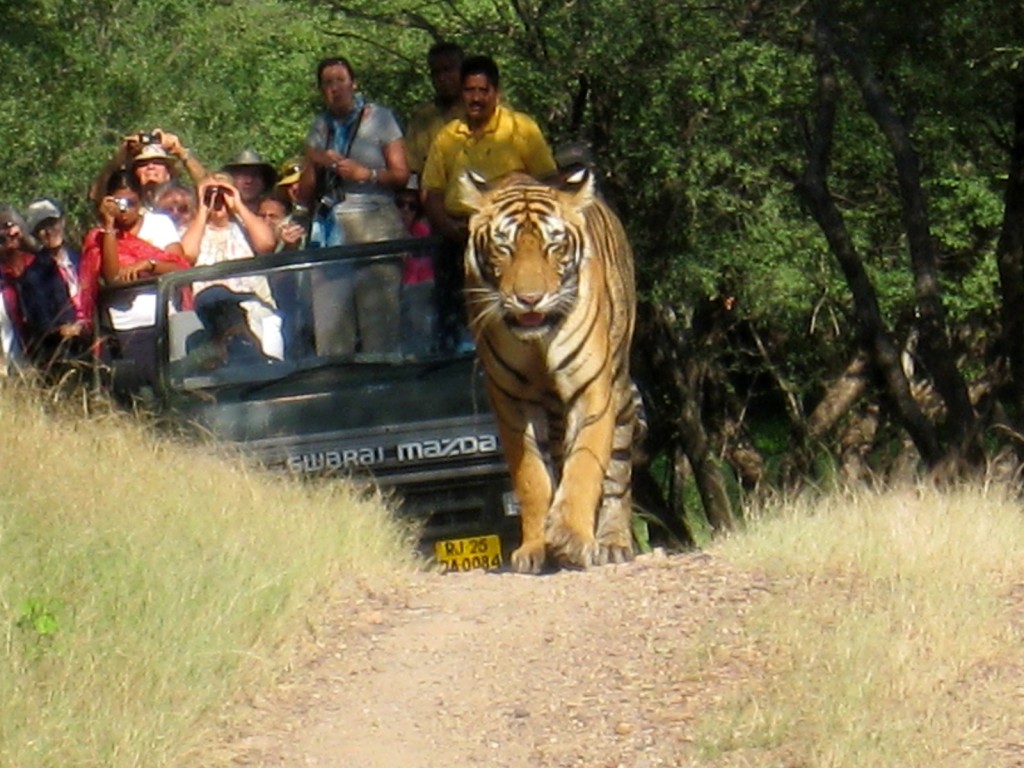
Ranthambore National park is in Sawai Madhopur District of Rajasthan state. Ranthambore Tiger Reserve is located at the junction of the Aravalli and Vindhya hill range, this is one of the finest places to view animals. The park covers an area of about 400 sq kilometers. Ranthambore National Park was declared a wildlife asylum in 1957 and in 1974 that it obtained the security of Project Tiger.
A variety of birds including owlets, the ubiquitous langur, leopard, caracal, hyena, marsh crocodiles etc are also found here. A Substantial geological feature inside the park would be that the ‘Great Boundary Fault’ The Rivers Chambal at the South as well as the banas from the north jumped the park. The park is scattered with steep rocky mountains as well as the dominating structure of Ranthambore Fort constructed in the 10th Century, adds to its attractiveness.
- Suggested Tour: Ranthambhore Tour Packages
Keoladeo Ghana National Park, Rajasthan
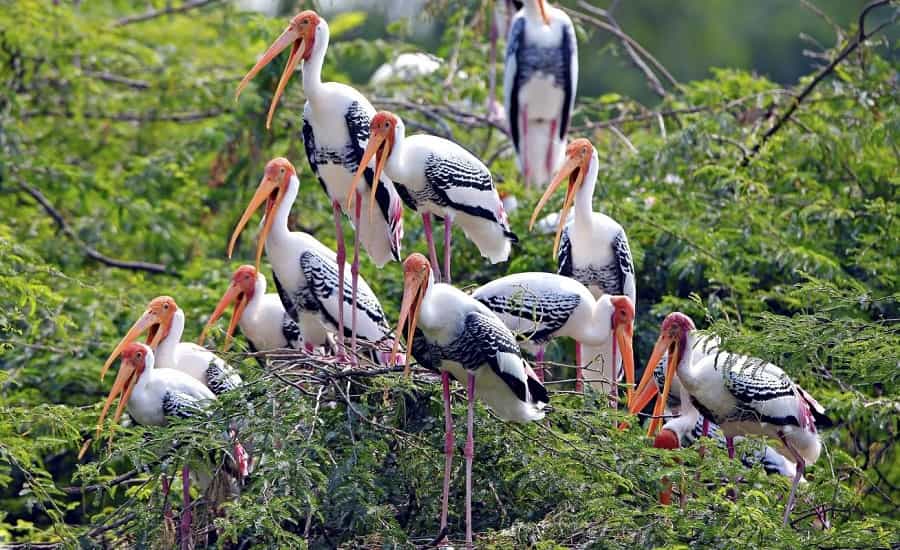
Keoladeo Ghana National Park in Rajasthan is commonly known as the Bharatpur Bird Sanctuary. It is one of the smallest parks in the country and one of the finest bird parks in the world. This magnificent bird haven in actual came into being puzzlingly as a duck shooting preserve for Maharaja Surajmal of Bharatpur. Flooding of water created shallow wetland ecosystem causing it to become an ideal habitat for millions of birds.
Sariska National Park, Rajasthan
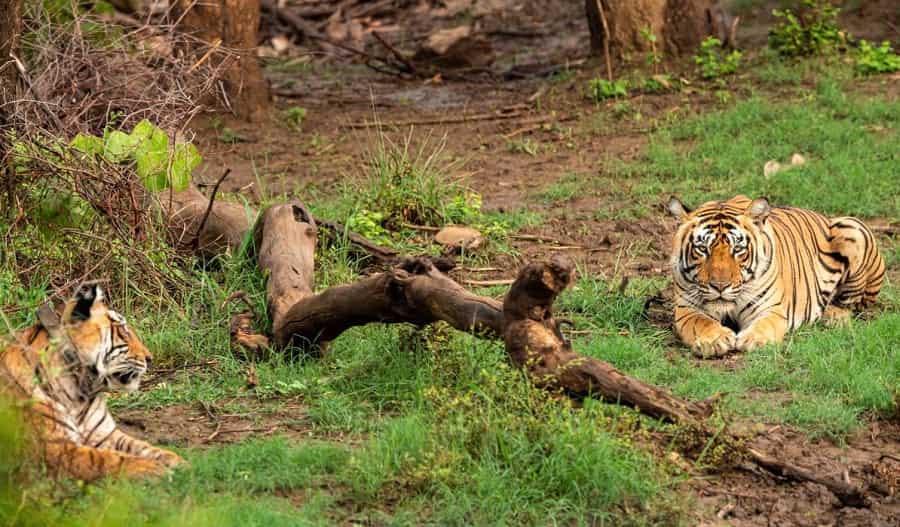
Sariska Tiger Reserve lies in the Alwar district of Rajasthan. The reserve was declared as a wildlife sanctuary in 1958 and came Beneath the Project Tiger as a Sariska Tiger reserve in 1979. The forest inside this park is basically dry deciduous forest dramatically changing with the change in the season. Dhok is the dominant tree species covering over 90 percent of the area of the forest. The Northern Aravali Hills dominate the skyline with their mixture of sharp cliffs and narrow ravines. The landscape of Sariska comprises of hills and valleys of the Aravali range.
Sariska Park is a home to numerous carnivores including leopard, Wild Dog, Hyena, Jackal and Tiger. These feed on Sambar, Nilgai, Chausingha, Wild Boar etc. Sariska is also known for its large population of Rhesus Monkeys which are found in large numbers in Talvriksh.
Kaziranga National Park, Assam
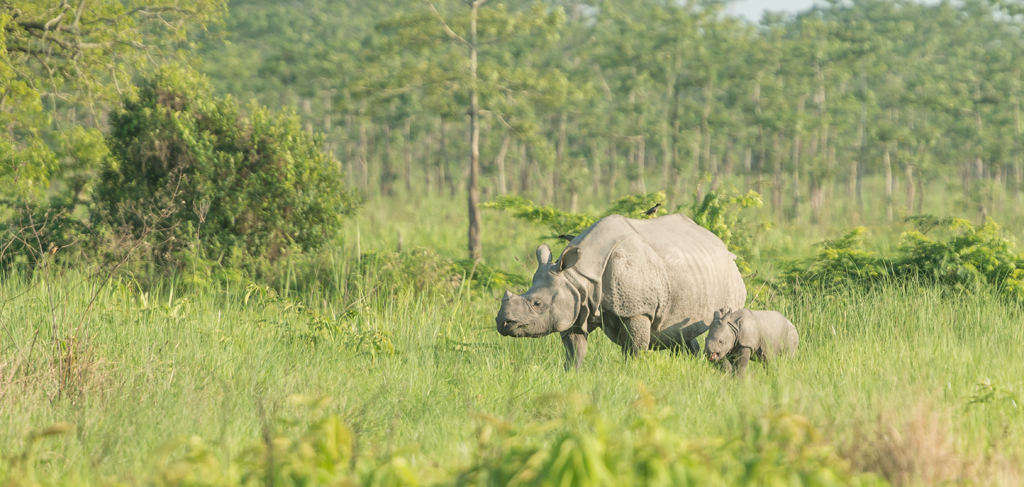
Situated at about 195 kms away from Guwahati, Kaziranga is a dwelling place of myriads of species of birds and animals but mainly the endangered One-Horned Rhinoceros. This park also boasts of its variety of creatures and other wildlife species. On account of this remarkable number of creatures, Kaziranga National Park was announced as the Tiger reserve Forest from 2006.
It remains closed during the monsoon months of June to September due to heavy floods. It is advised for the visitors to pre-book their elephant rides online. People interested to visit Kaziranga can reach Tezpur by flight or by road and then take a private cab or a bus to Kaziranga which is at a distance of 60 kms from Tezpur.
- Suggested Tour: Kaziranga National Park Tour
Mudumalai Wildlife Sanctuary, Tamil Nadu
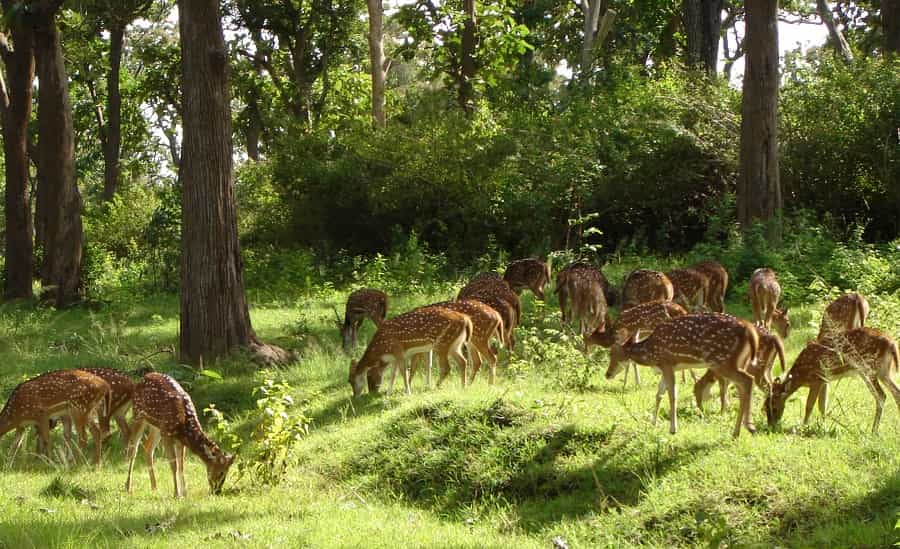
Mudumalai Wildlife Sanctuary and National Park is situated at the tri-junction of Tamil Nadu, Kerala and Karnataka on the North eastern Slopes of the Nilgiris Part of the Western Ghats descending to the Mysore Plateau. Together with Bandipur Tiger Reserve(Karnataka) from the North and Wayanad Wildlife Sanctuary (Kerala) from the west, the Southern Area Creates One continuous Feasible habitat for a Diverse Selection of wildlife and Also is Part of the Nilgiri Biosphere Reserve.
There are several species of venomous and non-venomous snakes including python. The flying lizard is a rare and interesting reptile that is found in this sanctuary.
Kanchenjunga National Park, Sikkim
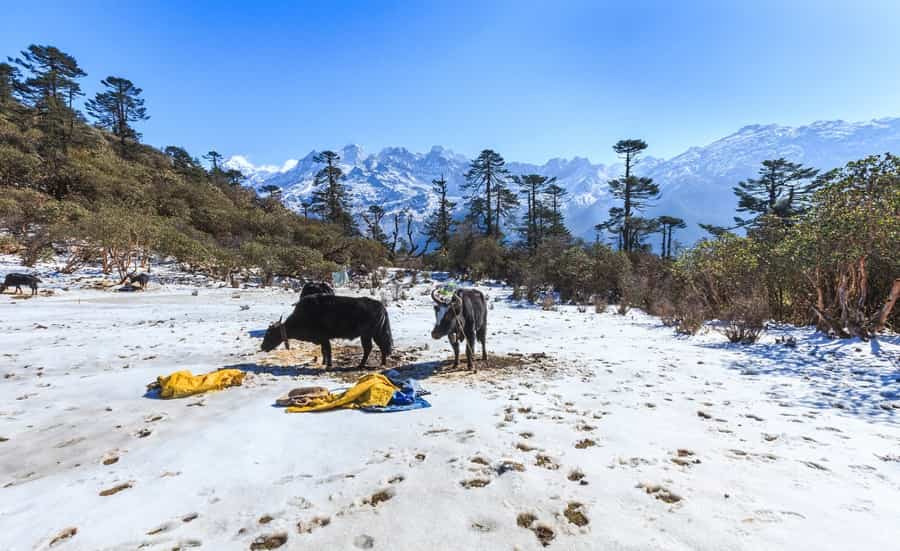
This National Park in Sikkim extends from the cold deserts of Lhonak valley and the ridges of Lachen in the North District to the historical place at Yuksom. The western boundary of the park runs on the international boundary with Tibet. The park covers an area of 1.784 sq kms and occupies as much as 25.14% of the land area of Sikkim. This area lies within reserved forests and except for a Tibetan mall there are no other village settlements inside the park.
The park is a reservoir of diverse habits including some rare and endangered species like Snow Leopard, Red Panda, Musk Deer, Himalayan Thar, Tibetan Fox etc.
Valley of Flowers National Park, Uttarakhand
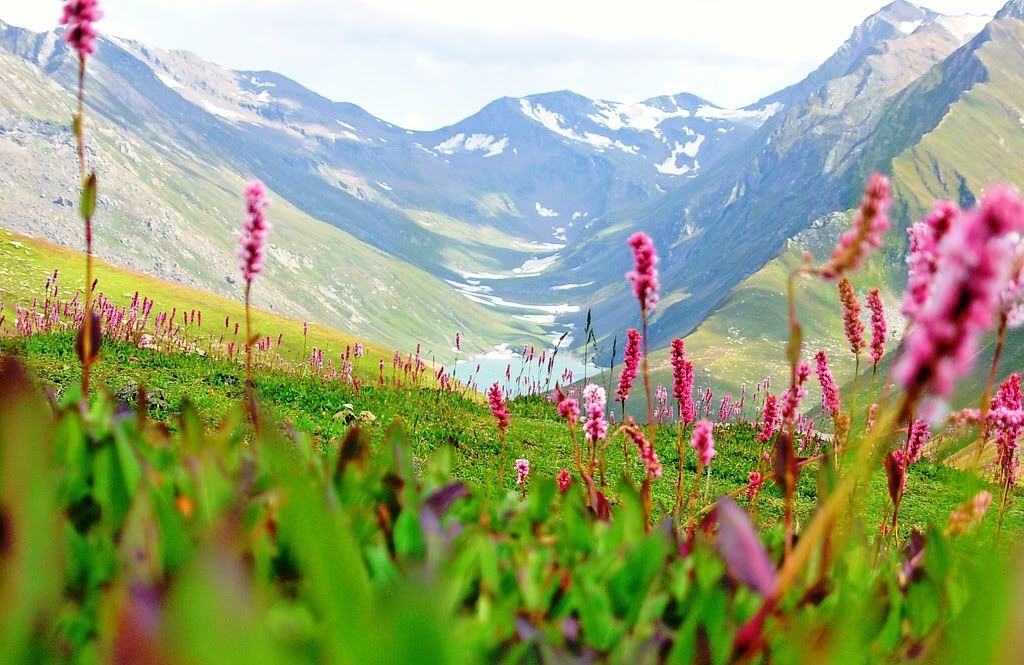
Valley of Flowers National Park is located in the Himalayan ranges of Uttarakhand. The park spreads across a place of 87.50 sq kilometers and was announced as a national park at the calendar year 1982. In 1988, UNESCO declared Valley of Flowers National Park of India together with Nanda Devi National Park as Nanda Devi and Valley of Flowers National Park World Heritage Site. The altitude of the park ranges between 3250 m to 6750 m.
Over 300 species of wildflowers can be seen at the Valley of Flowers National Park. These include Marsh Marigold, Lilium, Campanula, Pedicularis, Arisaema, Geranium, Bistorta, Rhododendrons, Braham Kamal, Inula, Ligularia, etc. The wildlife here comprises of Musk Deer, Blue Sheep, Snow Leopard, Himalayan leopard etc. A number of species of butterfly also inhabit this park.
- Suggested Tour: Valley of Flowers Trek Package
Dudhwa National Park, Uttar Pradesh
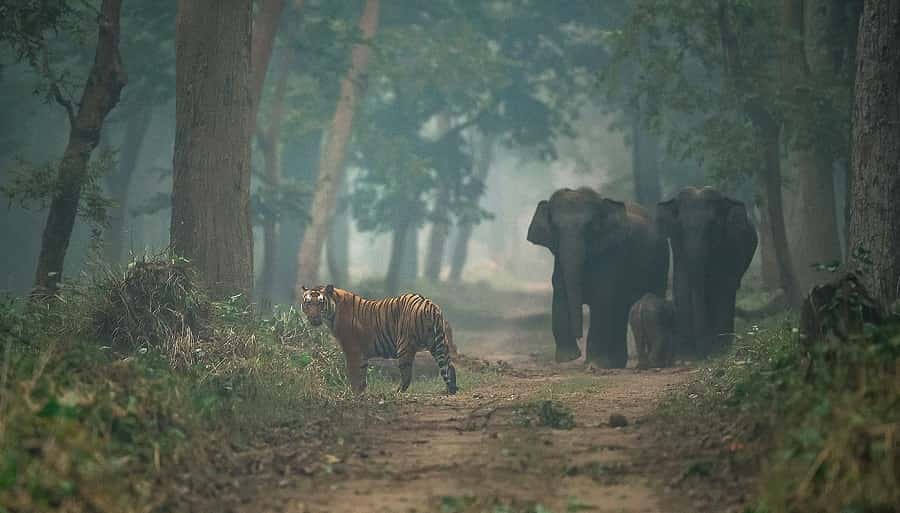
Dudhwa National Park in Up spreads over 811 sq km near the border of India and Nepal encompassing Northern tropical semi evergreen forests, moist deciduous forests, moist Savannah forests and tropical, seasonal swamp forests. One of the rarest species of deer is found in this area. The swamp deer are supposed to number 1500. There are 37 species of mammals, 16 species of reptiles and 400 species of avifauna. Dudhwa is said to have 101 tigers and 4 leopards. Recently the Hispid Hare has been sighted in this area.
In 1984, major rhino rehabilitation project was started here. Dudhwa came under Project Tiger in 1988. The reserve has a wide range of fascinating wildlife which includes sloth bear, rattle, civet, jackal, leopard cat, fishing cat, hog deer, barking deer, chital etc.
Nanda Devi National Park, Uttarakhand
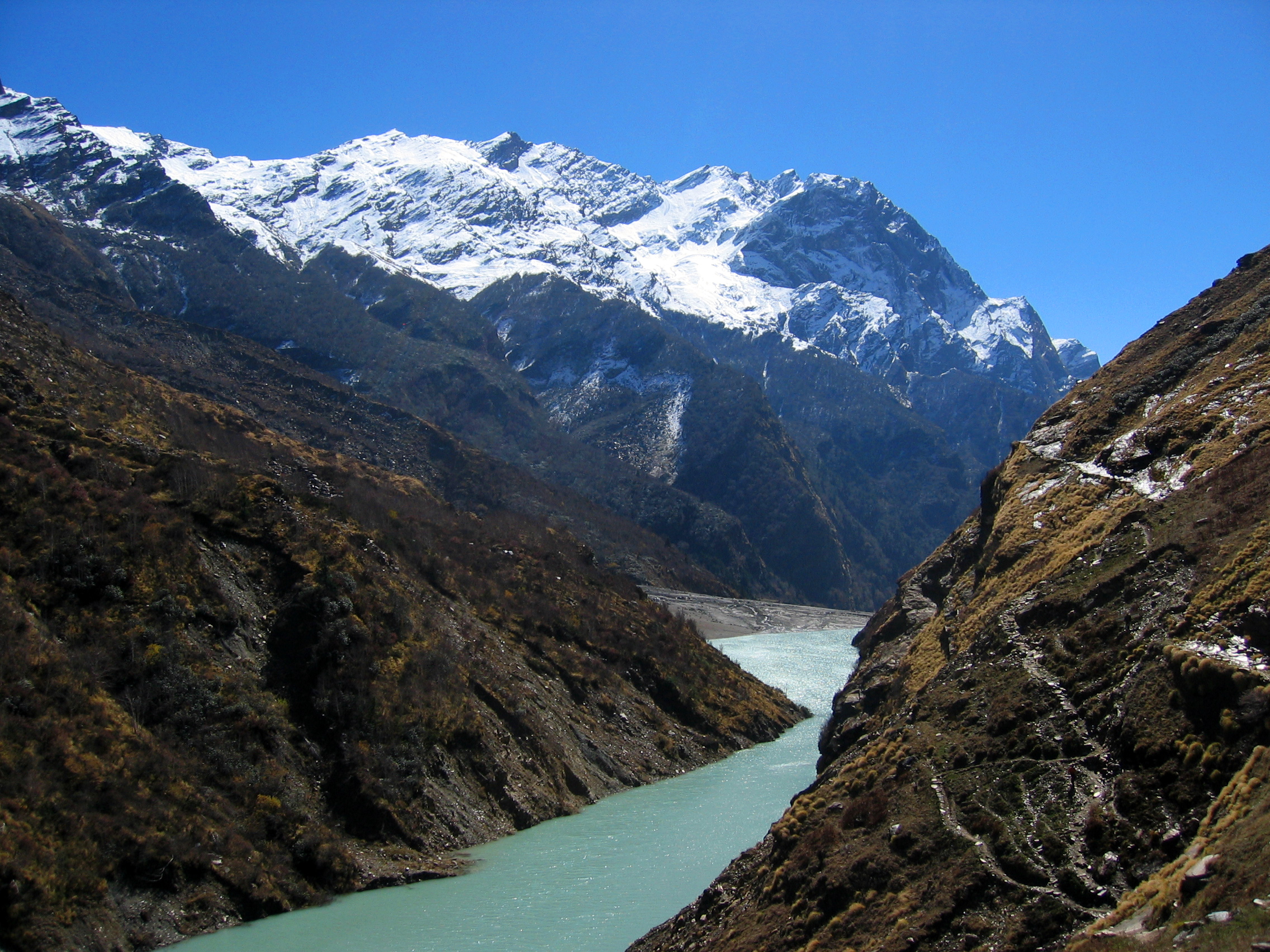
The sanctuary has been converted into a National Park and has been temporarily closed for the visitors because of environmental concerns. It has an average of 4500 m and is surrounded by as many as seventy loft peaks, The Nanda Devi( 7817 m) being the highest of them all. It is in the form of a cup with lush green meadows, white waterfalls and exotic wild Flora and fauna.
Sir Edmund Hillary described the Sanctuary as a God-gifted wilderness – India’s training ground for adventure – and rightly so. The wildlife found in the park include Leopard, Red Panda, Musk Deer, Himalayan Thar, Himalayan Black Bear etc.
- Suggested Tour: Mount Nanda Devi East Expedition
Sundarban National Park, West Bengal
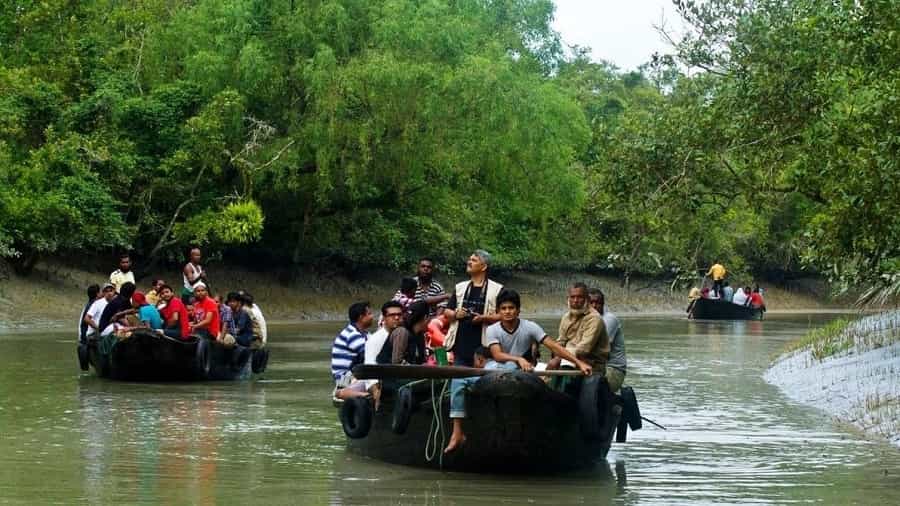
IMAGE SOURCE
The Sunderban National park covers 10,000 sq km of land and water, more than half of which is in India and the rest being in Bangladesh, in the Ganges delta. It contains the world’s largest area of mangrove forests. It is a tidal forest. A number of rare and endangered species live in this park, including tigers, aquatic mammals, reptiles and birds. A UNESCO World Heritage Site, the Sundarbans are a huge region covering 4264 sq kilometers from India alone. T
he Indian Sundarbans type the biggest Tiger Reserve and National Park in India. Even the Sundarbans forest is a home for over 250 tigers. Even the Royal Bengal Tigers have accommodated themselves really well to the aqua surroundings and are really good swimmers. In addition to tigers, there are also Chital Deers and Rhesus monkeys.
Himalayan Zoological Park, Sikkim
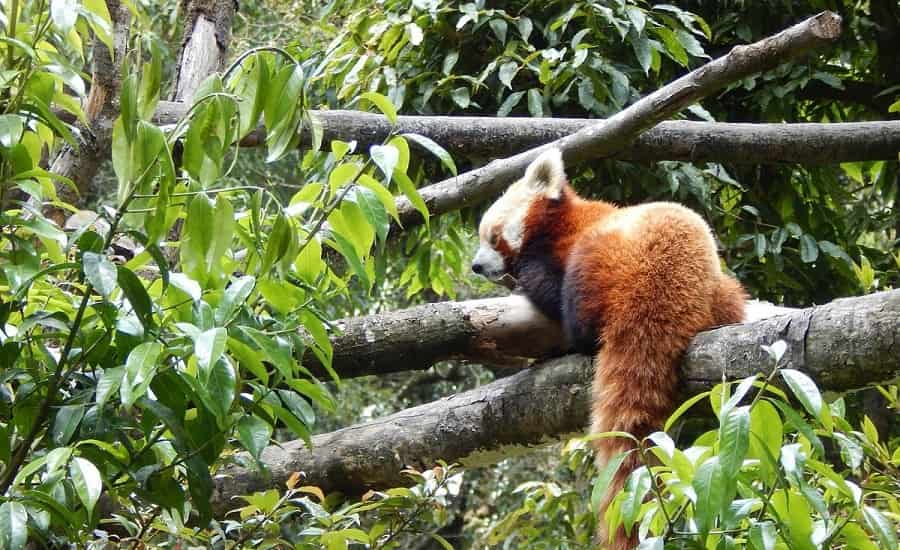
This park in Sikkim is spread over an area of 205 hectares of mountainous land encompassing steep terrain suitable for Musk deer and blue sheep, gentle slopes for Himalayan Black Beer, Barking Deer, a vision valley for Red Panda, Danphe-Monal ( bird) and many other endangered Himalayan species.
List of animals that seek shelter here are Snow Leopard, Red Panda, Musk Deer, Himalayan Tahr, Himalayan Black Bear, Blue Sheep, Tibetan wolf, Red fox, Common Otter, Langur, Wild Boar, Yak, Goral, porcupine, civet, jackal, leopard cat, fishing cat, hog deer, barking deer, chital, Pythons, Snakes, Wild Lizards, reptiles, etc.
- Also Read: National Parks in Indian Himalayan Region
Gulf of Mannar Marine National Park, Tamil Nadu

The Gulf of Mannar Marine National Park situated in Tamil Nadu. The core area of about 560 sq km within the Gulf of Mannar Biosphere Reserve covering an area of 10,500 sq km on the southeast coast of India. It covers shorelines of Tuticorin, Rameshwaram, Kanyakumari, and Tirunelveli. It is the first Marine Biosphere Reserve in Southeast Asia.
A total of 92 wild and 9 introduced species of vegetation were recorded in the islands. Peculiar animals like Balanoglossus living fossil linking invertebrates and vertebrates is endemic here. Sandy shoes of the island are feeding ground for five endangered marine turtles- Green turtle, Olive Ridley turtle, Hawksbill turtle, leatherback turtle, and Loggerhead turtle.
Govind Pashu Vihar National Park & Sanctuary, UK
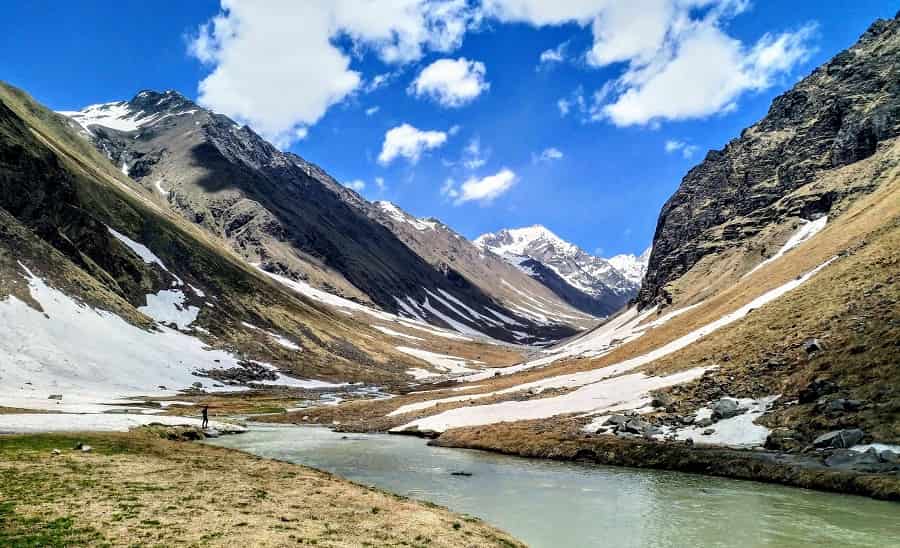
The Govind Wildlife Sanctuary situated in the Uttarkashi district of Uttarakhand was first established on the 1st of March, 1955. It spreads over an area of 957,969 sq km. The entire area of the national park is subjected to light to heavy amount of snowfall. This park is home to many endangered animals and its large area along with the contiguous forests of the neighboring forest divisions help in maintaining genetic diversity. The area is very rich in medicinal plants, many of which form the basis for certain live-saving drugs.
Over 15 species of animals and 150 species of birds exist in this sanctuary. The important mammals being Snow Leopard, Black Bear, Brown Bear, Musk deer, Himalayan Thar, Serow and Common leopard. Snow Leopard dwells in the inner Himalayas above the altitude of 3500 m. In the eighth plan, the Govt. of India launched the Snow Leopard Project for the long term conservation of this elusive cat. The endangered birds found in the area are Monal Pheasant, Himalayan Snow Cock, Golden eagle, Steppe Eagle, Bearded vulture etc.
Point Calimere Wildlife Sanctuary, Tamil Nadu
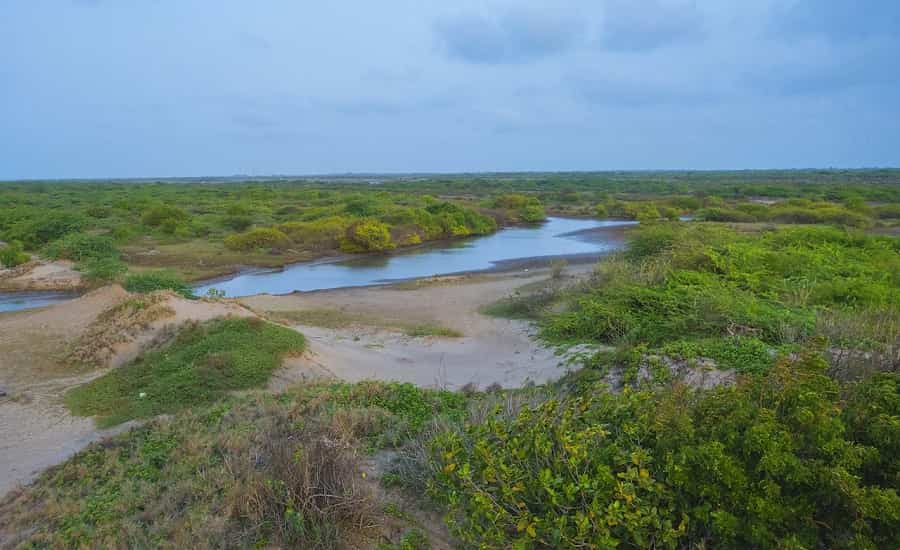
Point Calimere Wildlife Sanctuary was created in 1967 for the conservation of Blackbucks, an endangered and endemic species of India. The sanctuary is located in Nagapattinam area of Tamil Nadu. This huge swampy tract of Point Calimere is the scene of one of India’s greatest avian spectacles. Point Calimere encompasses 17.26 sq kilometers of sandy shore formed by saline swamps and thorny scrub around the backwaters.
Point Calimere is associated with Hindu mythology and faith. The woods of Point Calimere were earlier called Vedaranyam forests which translates to Forests of the Vedas. The climate of this place is monsoonal. Here, Blackbuck, locally known as the Velimanna is that the important species of this sanctuary. They are largely seen grazing n the open grassland area. A notable feature of the sanctuary is the existence of feral horses.
- Suggested Tour: India Wildlife Tour Packages
This is great information about national park in india.. i also want visit this national park after reading your blog..Thank you for sharing this blog..
I loved reading your blog. Its very informational & nicely written. It reminded me of my tour to Corbett National Park last year it was wonderful too. Keep writing 🙂